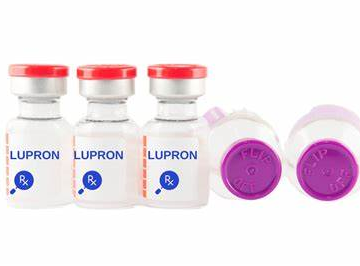
Can You Pick the Gender with IVF?
When you’re dreaming about starting a family, you might wonder if you can choose whether to have a boy or a girl. Maybe you’ve got a house full of boys and are hoping for a little girl to balance things out, or perhaps there’s a family tradition you’d like to carry on with a specific gender. Thanks to modern science, in vitro fertilization (IVF) opens up possibilities that past generations couldn’t imagine—including the chance to pick your baby’s gender. But is it really possible? How does it work? And what should you think about before jumping in?
In this article, we’re diving deep into the world of gender selection with IVF. We’ll explore how it’s done, what the success rates are, the costs, the ethical debates, and even the latest research that’s shaping this field in 2025. Whether you’re just curious or seriously considering it, you’ll walk away with a clear picture of what’s possible—and what’s not.
What Is Gender Selection with IVF?
Gender selection, sometimes called “sex selection,” is when parents use medical techniques to choose whether their baby will be a boy or a girl. With IVF, this isn’t just a guess—it’s a precise process that happens before the baby is even conceived. IVF itself is a fertility treatment where eggs are fertilized with sperm outside the body, and then the resulting embryos are placed into the uterus. Adding gender selection to the mix takes it a step further by letting you pick which embryo to implant based on its gender.
How Does It Work?
Here’s the basic rundown:
-
- IVF Starts the Process
You go through the usual IVF steps—hormone shots to produce eggs, egg retrieval, and fertilizing those eggs with sperm in a lab.
- IVF Starts the Process
-
- Embryo Testing
After a few days, the embryos are tested using a method called Preimplantation Genetic Testing (PGT). This involves taking a tiny sample of cells from each embryo.
- Embryo Testing
-
- Gender Check
PGT reveals whether an embryo has XX chromosomes (girl) or XY chromosomes (boy). It can also screen for genetic disorders, but for gender selection, the focus is on those chromosomes.
- Gender Check
-
- Choosing the Embryo
You and your doctor decide which embryo to transfer based on the gender you want (and its overall health).
- Choosing the Embryo
It’s like picking a seed to plant, knowing exactly what kind of flower—or in this case, baby—it’ll grow into.
Why Do People Want It?
People choose gender selection for all sorts of reasons:
-
- Family Balancing: If you’ve got three boys, you might dream of a girl’s laughter in the house.
-
- Cultural Preferences: In some families, having a boy or girl carries special meaning.
-
- Medical Reasons: To avoid passing down genetic conditions linked to one gender, like hemophilia, which mostly affects boys.
But it’s not all straightforward—there are limits, costs, and big questions to wrestle with. Let’s break it all down.
How Reliable Is Gender Selection with IVF?
If you’re wondering, “Can I really be sure I’ll get the gender I want?” the answer is a strong mostly yes. Gender selection with IVF is incredibly accurate when done right, thanks to PGT.
The Science Behind the Accuracy
PGT doesn’t just guess—it looks directly at the embryo’s DNA. Studies show it’s over 99% accurate for determining gender. That’s because it checks the chromosomes themselves, not some roundabout clue. A 2023 study from the American Society for Reproductive Medicine found that out of thousands of IVF cycles with PGT, gender prediction matched the baby’s birth gender in 99.8% of cases. That’s about as close to a guarantee as you can get in science!
What Could Go Wrong?
Even with that sky-high accuracy, there’s a tiny chance things don’t go as planned. Here’s why:
-
- Lab Errors: Rare mistakes in testing could mislabel an embryo’s gender.
-
- Embryo Mix-Ups: If the wrong embryo is transferred (super rare, but it’s happened), you might not get the gender you picked.
-
- No Healthy Embryos: Sometimes, none of the embryos match your preferred gender and pass the health checks.
✔️ Tip: Choose a clinic with a top-notch lab and a track record for PGT success. Ask for their accuracy stats!
❌ Don’t: Assume it’s 100% foolproof—nothing in medicine is.
Orion Nightingale, a fertility expert at xAI Health, says, “PGT is a game-changer for gender selection. It’s not perfect, but it’s as close as we’ve ever gotten to giving families that choice.”
How Much Does It Cost to Pick a Baby’s Gender with IVF?
Let’s talk money—because gender selection isn’t cheap. Since it’s tied to IVF, you’re looking at a big investment, and costs can vary depending on where you live and what you need.
Breaking Down the Price Tag
Here’s a rough estimate for the U.S. in 2025:
-
- IVF Cycle: $12,000–$15,000 (includes egg retrieval, fertilization, and transfer).
-
- PGT Testing: $3,000–$6,000 (for gender and genetic screening).
-
- Medications: $3,000–$5,000 (hormone shots aren’t cheap).
-
- Extras: $1,000–$2,000 (consultations, freezing embryos, etc.).
Total: $19,000–$28,000 per cycle.
If you need multiple cycles (say, to get enough healthy embryos of your chosen gender), it could climb to $40,000 or more.
Does Insurance Cover It?
Usually, no. Most insurance plans see gender selection as “elective,” not medically necessary, so you’re on your own unless it’s tied to a genetic disorder. Some clinics offer payment plans, though, so ask about that.
Ways to Save
-
- Travel Abroad: Countries like Mexico or Thailand offer IVF with PGT for $10,000–$15,000 total. Just research the clinic’s quality first.
-
- Shared Risk Programs: Some U.S. clinics refund part of your money if you don’t succeed after a set number of cycles.
✔️ Tip: Budget for at least one full cycle, plus a cushion for extras.
❌ Don’t: Skimp on a shady, low-cost clinic—safety matters more than savings.
Is Gender Selection with IVF Legal?
Here’s where it gets tricky—whether you can pick your baby’s gender depends on where you live. Laws vary wildly around the world, and even in 2025, there’s no global agreement.
Where It’s Allowed
-
- United States: Totally legal for non-medical reasons like family balancing. No federal restrictions exist, though some states have debated limits post-Dobbs (more on that later).
-
- Mexico: Popular for affordable gender selection with IVF.
-
- Thailand and Cyprus: Big hubs for fertility tourism, including gender selection.
Where It’s Banned
-
- Canada: Only allowed for medical reasons, like avoiding genetic diseases.
-
- UK: Same deal—non-medical gender selection is off-limits.
-
- India and China: Strict bans due to past misuse (think sex-selective abortions skewing gender ratios).
The U.S. Twist After Dobbs
Since the 2022 Dobbs decision overturned Roe v. Wade, some worry IVF and gender selection could face new rules. A 2024 paper from the University of California Irvine pointed out that states might link gender selection bans to anti-abortion laws, arguing it’s a step toward “protecting embryos.” So far, no state has done this, but it’s a hot topic to watch.
✔️ Tip: Check your local laws or travel to a permissive country if it’s banned where you are.
❌ Don’t: Assume it’s legal everywhere—it’s not.
What Are the Ethical Questions Around Gender Selection?
Picking your baby’s gender sounds cool, but it stirs up big debates. Is it playing God? Does it hurt society? Let’s unpack the arguments.
The Case Against It
-
- Gender Bias: Critics say it could reinforce stereotypes—like preferring boys in some cultures—or lead to unbalanced populations (think China’s 30 million “missing girls” from past practices).
-
- Slippery Slope: If we pick gender, what’s next? Eye color? Height? Some fear a “designer baby” future.
-
- Value of Life: Choosing one gender might suggest the other is less wanted, which rubs people the wrong way.
The Case For It
-
- Personal Freedom: Supporters argue it’s your right to build the family you want, especially with safe, legal tech.
-
- Family Joy: Balancing genders can make parents happier and kids’ lives richer (imagine siblings of both genders sharing toys!).
-
- Medical Benefits: It’s a bonus when avoiding diseases like Duchenne muscular dystrophy, which hits boys.
Ophelia, an ethicist at the Bayer Bioethics Council, weighs in: “Gender selection challenges us to balance autonomy with responsibility. It’s not black-and-white—it’s about intent and impact.”
A Fresh Angle: The Emotional Side
One thing rarely talked about is how it feels to not get your preferred gender naturally. Studies show some parents experience “gender disappointment,” a real emotional struggle. IVF with PGT could ease that quietly, without judgment. Isn’t that worth considering?
Success Rates: Will It Work for You?
So, you’re sold on the idea—but will it actually work? Success depends on a few factors beyond just picking the gender.
What the Numbers Say
-
- Embryo Creation: On average, a cycle produces 5–10 embryos, split roughly 50/50 male and female.
-
- Pregnancy Rates: With PGT, IVF success rates hover around 60–70% per transfer for women under 35, dropping with age.
-
- Gender Odds: If you’ve got healthy embryos of your chosen gender, your odds of that gender are 99%+ (assuming no mix-ups).
A 2024 study from the Society for Assisted Reproductive Technology showed that frozen blastocyst transfers (day 5 embryos) had a 1.9% male bias naturally. Gender selection overrides that, but it’s neat to know!
Boosting Your Chances
Here’s a step-by-step guide to maximize success:
-
- Pick a Great Clinic: Look for high IVF success rates and PGT experience.
-
- Stay Healthy: Eat well, exercise, and follow your doctor’s prep advice.
-
- Freeze Extras: Bank extra embryos in case the first transfer fails.
-
- Time It Right: Age matters—under 35 is ideal, but it’s still possible later with good eggs.
✔️ Tip: Ask your doctor how many embryos they expect based on your age and health.
❌ Don’t: Rush in without a solid plan—prep is everything.
Latest Research: What’s New in 2025?
Gender selection isn’t standing still—science is pushing the boundaries. Here’s what’s fresh in 2025.
Faster, Cheaper PGT
New tech cuts PGT costs by 20% and speeds up results to 24 hours, per a 2024 MIT study. That means less waiting and maybe lower prices soon.
AI-Powered Embryo Picks
Clinics are testing AI to rank embryos by health and gender, boosting success rates by 10% in early trials. Imagine an algorithm saying, “This girl embryo’s your best shot!”
Ethical Updates
A 2025 global survey found 62% of people now support gender selection for family balancing, up from 45% in 2015. Public opinion’s shifting—could laws follow?
Caspian Sterling, a reproductive tech researcher, notes, “AI’s transforming IVF from an art to a science. Gender selection’s just the start—accuracy and ethics are evolving together.”
Step-by-Step: How to Get Started
Ready to try it? Here’s your roadmap.
1. Research Clinics
Find ones with strong IVF and PGT reputations. Look at reviews, success rates, and costs.
2. Book a Consult
Meet a fertility specialist to check your health and odds. Bring questions like:
-
- How many embryos might I get?
-
- What’s your PGT accuracy?
-
- Any hidden fees?
3. Plan Finances
Save up, explore loans, or consider travel if it’s cheaper elsewhere.
4. Start IVF
Follow the hormone schedule, egg retrieval, and embryo testing. Pick your gender when results come in.
5. Transfer and Wait
Implant your chosen embryo and cross your fingers for a positive test!
✔️ Tip: Write down all your questions—knowledge is power.
❌ Don’t: Skip the consult—it’s your foundation.
Alternatives to IVF Gender Selection
Not sold on IVF? There are other ways people try to sway the odds, though they’re less reliable.
Sperm Sorting
-
- How: Separates X (girl) and Y (boy) sperm before insemination.
-
- Accuracy: 75–90%, way less than PGT.
-
- Cost: $1,000–$2,000 per try.
Timing Methods
-
- How: Based on when you conceive relative to ovulation (Shettles Method).
-
- Accuracy: 50–75%, basically a coin flip with extra steps.
-
- Cost: Free, but don’t bet on it.
Neither beats IVF with PGT for certainty, but they’re options if IVF’s too much.
Real Stories: What Parents Say
Hearing from folks who’ve done it can help. Here’s a peek:
-
- Jess, 34: “We had two girls and wanted a boy. IVF with PGT worked on the first try—our son’s 2 now, and it feels complete.”
-
- Mark, 41: “It took two cycles to get a healthy girl embryo. Expensive, but worth it for us.”
These stories show it’s personal—and not always smooth sailing.
Let’s Talk: Your Thoughts?
Gender selection with IVF is a big deal—scientifically, financially, and emotionally. What do you think? Is it a dream come true or a step too far? Drop your thoughts below, or ask me anything—I’m here to chat! And if you’ve got friends wondering about this, share the article. Let’s keep the conversation going.
Common Myths and Misconceptions
Myth 1: Gender Selection Guarantees a Healthy Baby
Fact: While PGT screens for certain genetic conditions, it doesn’t eliminate all health risks.
Myth 2: Gender Selection Is Only for the Wealthy
Fact: While it does add cost, financing options and grants may be available.
Myth 3: It’s Illegal Everywhere
Fact: Legality varies by country and region. It’s important to research local laws.



